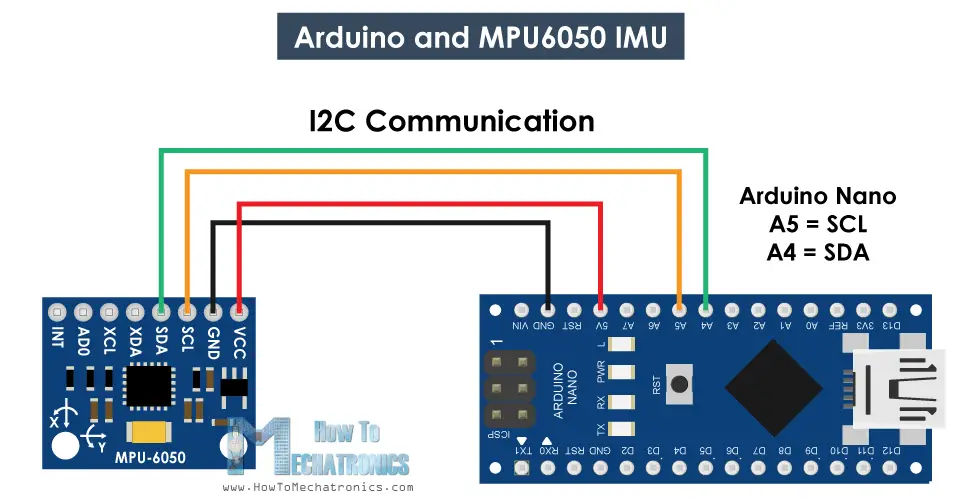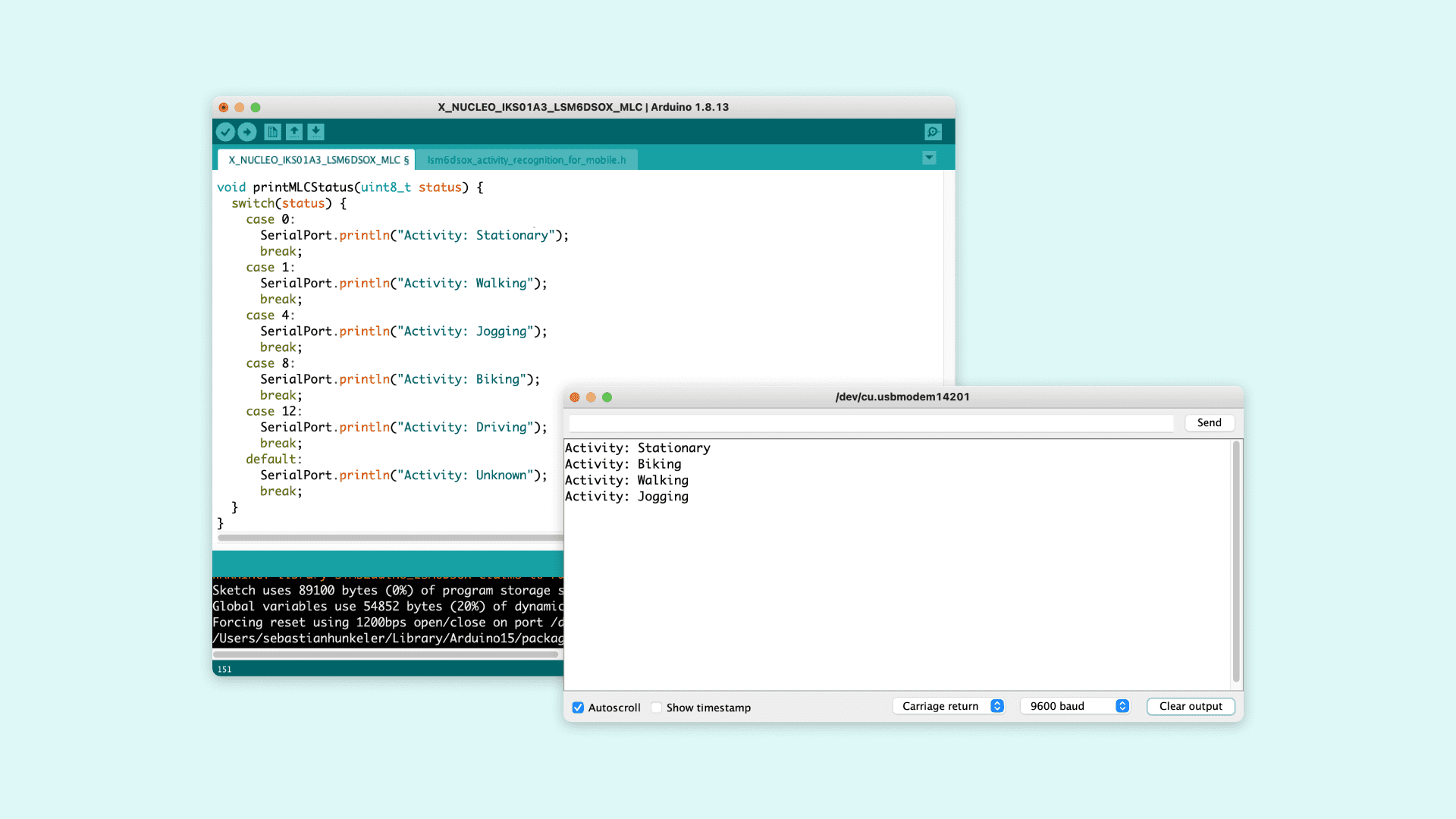

- #Imu arduino serial example how to#
- #Imu arduino serial example full#
- #Imu arduino serial example software#
So, now you will be able to decipher the meaning of 6DOF- 6 degrees of freedom.

What is an MPU-6050 sensor The MPU-6050 devices combine a 3-axis gyroscope and a 3-axis accelerometer on the same silicon die, together with an onboard Digital Motion Processor (DMP), which processes complex 6-axis MotionFusion algorithms.

#Imu arduino serial example software#
If AD0 pin is set to HIGH, the I2C address will be 0圆9.Before diving into the software part, let's assemble our hardware kits. #include "Wire.h" // This library allows you to communicate with I2C devices.Ĭonst int MPU_ADDR = 0圆8 // I2C address of the MPU-6050. At the end of the loop function, a delay of one second is added in order to avoid flooding the serial monitor with messages. Next, all values are retrieved and printed out to the serial connection. The first register contains the so-called “high byte” and the second register contains the “low byte”. As each register has a size of one byte, a single sensor value must be retrieved by accessing two registers. If you are wondering, why 14 registers are read instead of 7 registers, the reason is quite simple: Each sensor value has a size of 2 byte. Then, we request to read 14 registers (“Wire.requestFrom(MPU_ADDR, 7*2, true) ”). As a first step, we tell the GY-521 module where we are going to start reading (“Wire.write(0x3B) ”). Fourteen of these registers contain the sensor values that we need. The MPU-6050 has many registers which can be read. In the loop function, seven sensor values (3x accelerometer, 1x temperature, and 3x gyro) are requested from the GY-521 module. Moreover, we start our first I2C transmission to the GY-521 board to wake it up from sleep mode. In the setup function, a serial connection is established. The convert-function makes sure that all sensor values have the same width when they are printed out to the serial monitor later. Next, we define and declare some variables. At the beginning of our source code, the Wire library’s header file is included. We make use of the Arduino platform’s in-built library (Wire) to establish an I2C connection between the Arduino Uno and the GY-521 sensor. Next, connect the Arduino’s A5 pin to the module’s SCL pin. So, if you have an Arduino Uno without SCL and SDL pins, then connect the Arduino’s A4 pin to the module’s SDA pin.
#Imu arduino serial example how to#
Otherwise, if the pin is HIGH, the address will be 0圆9.)įritzing file that shows how to wire the GY-521 breakout board to an Arduino Uno. AD0 (If this pin is LOW, the I2C address of the board will be 0圆8.XCL (Auxiliary clock => I2C master serial clock for connecting the module to external sensors.).XDA (Auxiliary data => I2C master serial data for connecting the module to external sensors.).SDA (Serial Data Line of the I2C protocol.).SCL (Serial Clock Line of the I2C protocol.).Therefore, you can connect the board to 3.3V and 5V sources.) VCC (The breakout board has a voltage regulator.Please follow this link to find an excellent library with many examples.
#Imu arduino serial example full#
If you plan to use the full range of features or require reliable and stable position data, then I recommend to have also a look at ready-to-use libraries. The sensor values are retrieved by using the I2C serial data bus, which requires only two wires (SCL and SDA). In particular, it is shown how to retrieve the raw sensor values. This tutorial gives only a brief introduction to the GY-521/MPU-6050. Usually, the DMP processes algorithms that turn the raw values from the sensors into stable position data. The digital motion processor can be used to process complex algorithms directly on the board.

The GY-521 module is a breakout board for the MPU-6050 MEMS (Microelectromechanical systems) that features a 3-axis gyroscope, a 3-axis accelerometer, a digital motion processor (DMP), and a temperature sensor. GY-521 breakout board with an MPU-6050 MEMS.


 0 kommentar(er)
0 kommentar(er)
